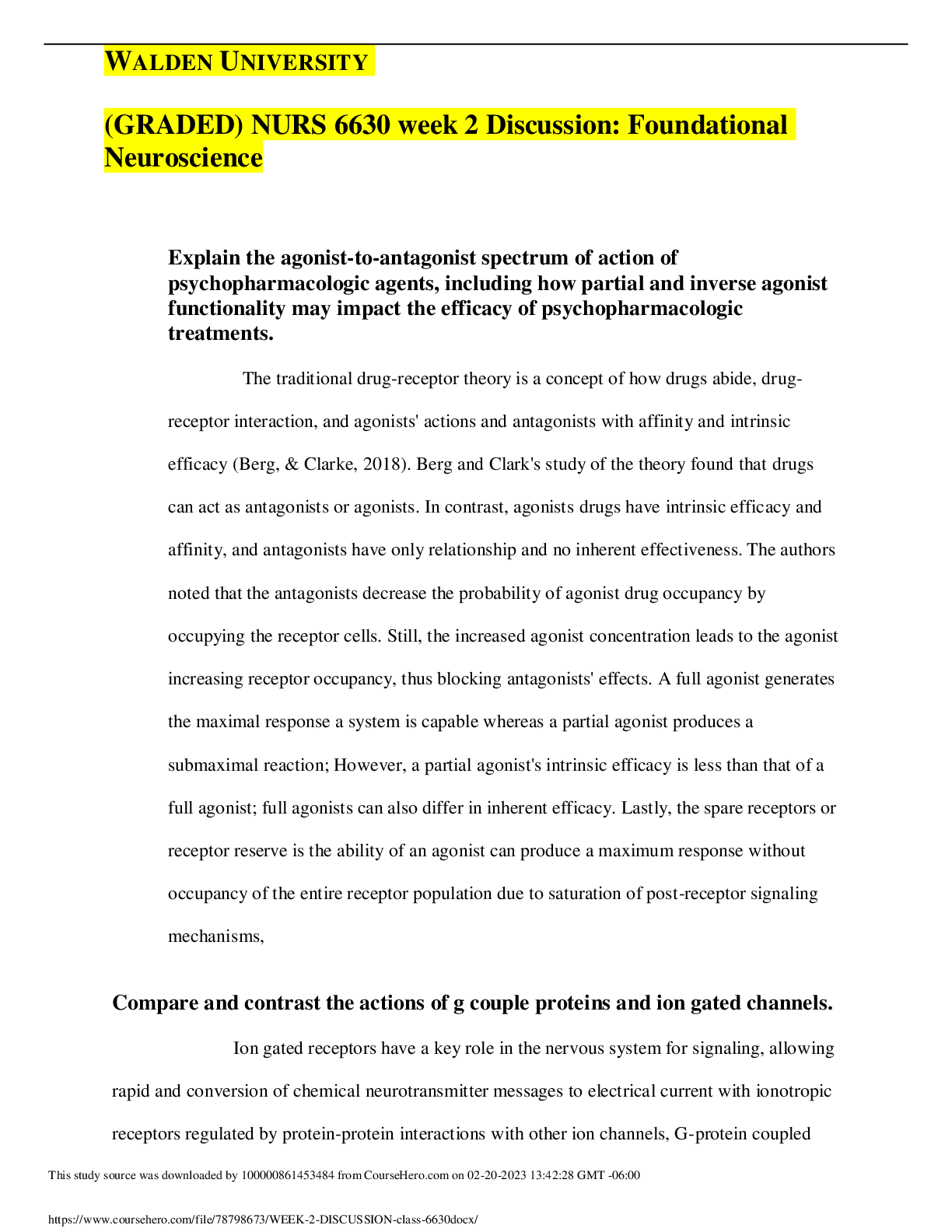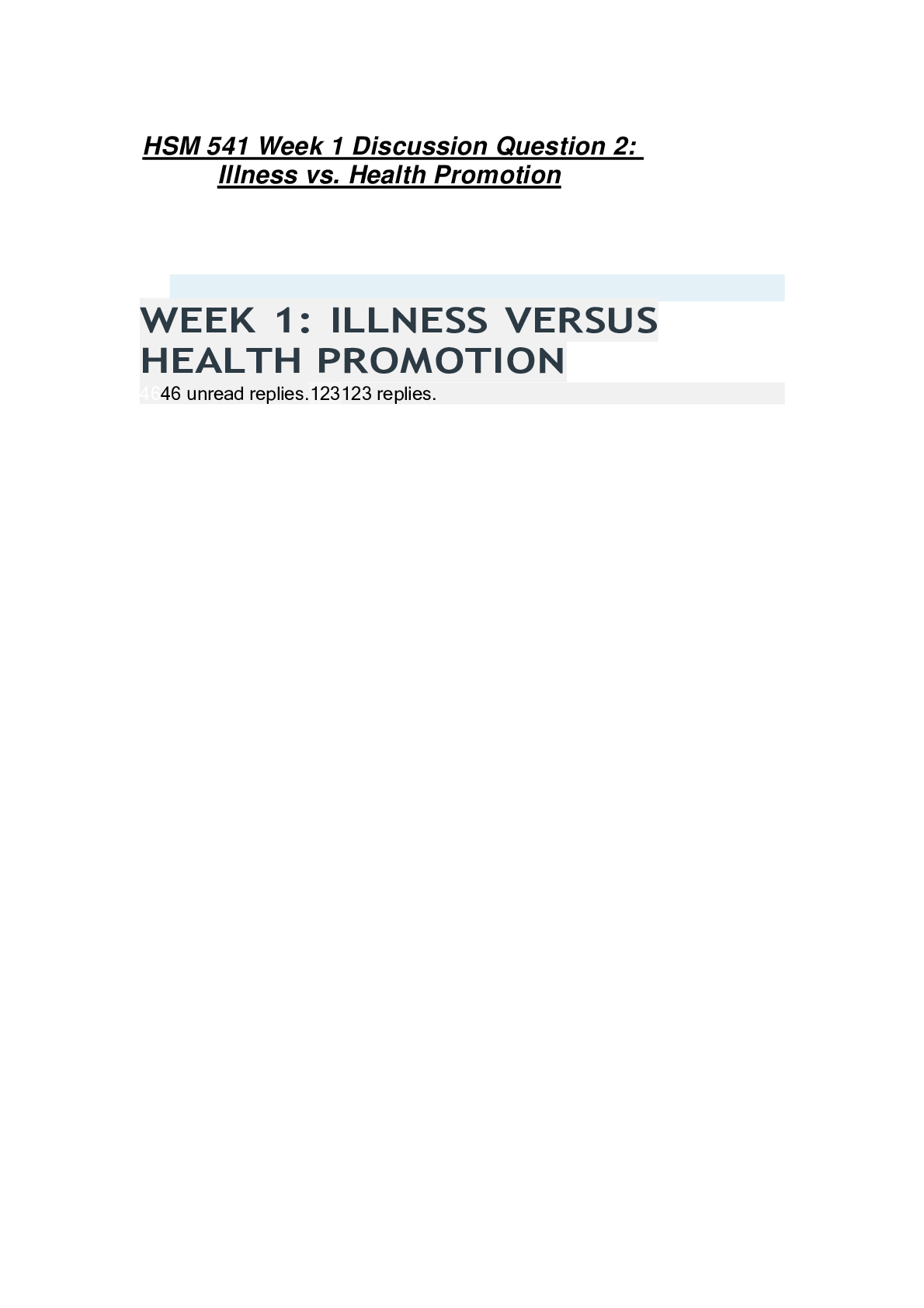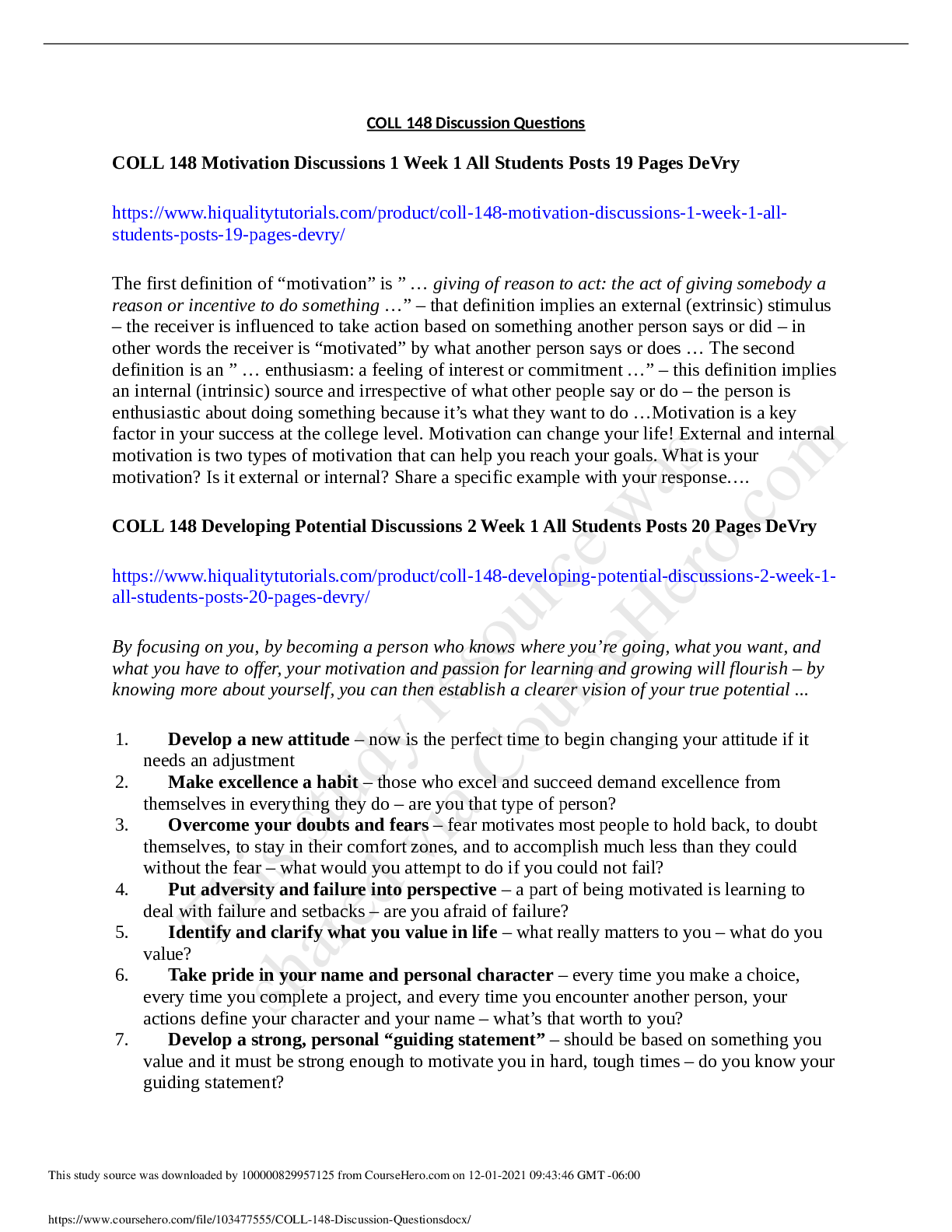Finance > DISCUSSION POST > HSM-340 Week 1 Discussion Question 1 – Finance and the Regulatory Components (GRADED A) (All)
HSM-340 Week 1 Discussion Question 1 – Finance and the Regulatory Components (GRADED A)
Document Content and Description Below
HSM-340 Week 1 Discussion Question 1 – Finance and the Regulatory Components You must always have a plan & a back up plan. Realize what you are staring with & what you may... end up with. Always plan for emergencies & set backs. Never take all that you have & put it into one decision. The major function of information in general & financial information in particular is to oil the decision-making process. Decision making is basically34the selection of a course of action from a defined list of possible or feasible actions. In many cases the actual course of action followed may be essentially no action; decision makers may decide to make no change from their present policies. It should be recognized, however, that both action & inaction represent policy decisions. Generating information is the key to decisionmaking. The quality & effectiveness of decision making depend on accurate, timely, & relevat information. The difference between data & information is more than semantic: Data becme information only when they are useful & appropriate to the decision. Many financial ata never become information because they are not viewed as relevant or are unavailable in an intelligible form. Five financial information that may be important are evaluate the financial condition of an ntity, evaluate stewardship within an entity, assessing the efficacy of operation, assessing the ffectiveness of operations, determining the compliance of operation with directives. text book). nd response re there any other types of information besides financial that may be useful in aking financial decisions? think that have the credit to back your financial plan would help you a lot in making ecisions. Be prepared for any changes that may come up. If you are not ready for hem then you could be asking for a downfall. dentify the major components of a corporate compliance plan, including the stablishment of internal controls relating to the finances of an organization. Clear & unambiguous organizational commitment, Supportive corporate ulture, clear & comprehensive compliance policies, procedures, processes, & progras, Effective education, Managerial accountability systems, Effective investigation & aluation of complaints, Adequate documentation & record-keeping. How does legal & regulatory issues shape & define good financial management of a health care organization? This study source was downloaded by 100000829957125 from CourseHero.com on 02-21-2022 23:15:03 GMT -06:00 I think that when they work together with each other instead of fighting against each other then it will help make the organization grow. If they don’t work together there could be a bif financial downfall in the company. Week 1 Discussion Question 2 Cost reimbursement was the predominant form of payment for most hospitals & other institutional providers by Medicare until the early 1980s. In addition to Medicare, most state Medicaid plans & a large number of Blue Cross plans paid hospitals on the basis of “reasonable” historical They set fee schedules & handle disputes between PPOs.costs. Today, the major payers have abandoned historical cost reimbursement & substituted other payment systems. We provide some discussion of cost reimbursement for two reasons. First, it is used in some limited settings for payment. For example, Medicare still pays on a cost basis for services performed in comprehensive cancer centers & critical-access hospitals (CAHs). Second, some policy analysts have suggested that “regulated cost reimbursement” might be a legitimate way to maintain the quality of patient care. Two key elements in historical cost reimbursement are reasonable cost & apportionment. Reasonable cost is simply a qualification introduced by the payer to limit its total payment by excluding certain categories of cost or placing limits on costs that the payer 3839deems reasonable. Examples of costs often defined as unreasonable & therefore not reimbursable are costs for charity care, patient telephones, & nursing education. Apportionment refers to the manner in which costs are assigned or allocated to a specific payer such as Medicaid. (text book) They set fee schedules & handle disputes between PPOs. http://en.wikipedia.org/wiki/Preferred_provider_organization a) Discuss the major reimbursement methods used in health care. b) Discuss the major aspects of Medicare benefits. c) List some of the important considerations when negotiating a health plan contract. Health care reimbursement is a major issue in health care reform. Reimbursement is the standard method of payment to health care providers. The payer is often an insurance firm or government entity. How these payments are made is a central concern. Another important issue is the continued trade-off between an organization's efficiency & bottom-line profit versus the freedom of patients & providers. http://www.ehow.com/list_6960815_health-care-reimbursement-issues.html Discuss the major aspects of Medicare benefits. This study source was downloaded by 100000829957125 from CourseHero.com on 02-21-2022 23:15:03 GMT -06:00 • Helps cover inpatient care in hospitals • Helps cover skilled nursing facility, hospice, & home health care • Helps cover doctors' & other health care providers' services, outpatient care, durable medical equipment, & home health care • Helps cover some preventive services to help maintain your health & to keep certain illnesses from getting worse • Offers health plan options run by Medicare-approved private insurance companies • Medicare Advantage Plans are a way to get the benefits & services covered under Part A & Part B • Most Medicare Advantage Plans cover Medicare prescription drug coverage (Part D) • Some Medicare Advantage Plans may include extra benefits for an extra cost • Helps cover the cost of prescription drugs • May help lower your prescription drug costs & help protect against higher costs in the future • Run by Medicare-approved private insurance companies http://www.medicare.gov/navigation/medicare-basics/medicare- benefits/medicare-benefits-overview.aspx List some of the important considerations when negotiating a health plan contract Clients and/or Payors, Covered Services, Medical Necessity, Standard of Care. Payors often include language requiring the Provider to render the “highest” or “best” quality of care. Maintaining Records, Audits, Policies & Procedures, Utilization Management. HSM 340 Final Exam 1. (TCO 4) When would it make sense to use a flexible budget as compared to a forecast budget? 2. (TCO 7) Explain the difference between a horizontal merger & a vertical merger. 3. (TCO 1) Describe the Outpatient Code Editor. 4. (TCO 1) What is the primary provision of the EMTALA. 5. (TCO 3) Use the following data to calculate the variances in problem. data Your hospital has been approached by a major HMO to perform all their MS-DRG 470 cases (major joint procedures). They have offered a flat price of $10,000 per case. You have reviewed your charges for MS-DRG 470 during the last year & found the following profile: The HMO in the above example has indicated that their doctors use less expensive joint implants. If this less expensive implant is used, your medical supply charges would be reduced by $2,000. What is the estimated reduction in variable cost? 6. (TCO 2) Explain the difference between the accrual basis of accounting & the cash basis of accounting.? 7. (TCO 2) What are the double-entry accounting system & the duality concept? How are they related? 8. (TCO 5) Define an annuity. This study source was downloaded by 100000829957125 from CourseHero.com on 02-21-2022 23:15:04 GMT -06:00 9. (TCO 5) What avenues are available for for-profit healthcare providers to increase their equity position? 10.(TCO 6) Describe the two major components of a working capital management strategy? 11. (TCO 6) What is the general rule of thumb about when to borrow long-term or short- term? 12. (TCO 5) How should the interest rate & n periods of compounding be modified if compounding for less than one year? This study source was downloaded by 100000829957125 from CourseHero.com on 02-21-2022 23:15:04 GMT -06:00 [Show More]
Last updated: 1 year ago
Preview 1 out of 4 pages
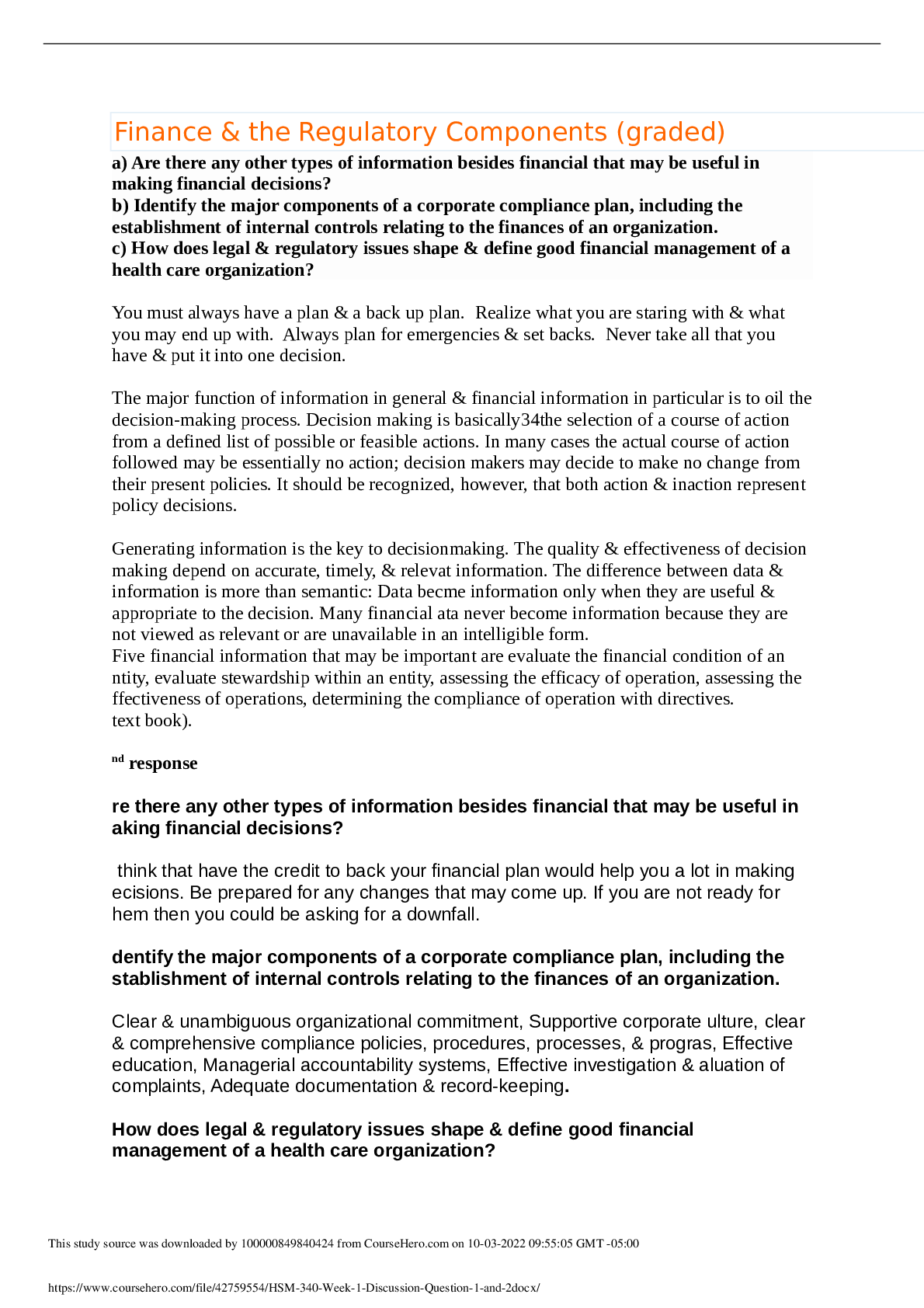
Reviews( 0 )
Document information
Connected school, study & course
About the document
Uploaded On
Feb 22, 2022
Number of pages
4
Written in
Additional information
This document has been written for:
Uploaded
Feb 22, 2022
Downloads
0
Views
58


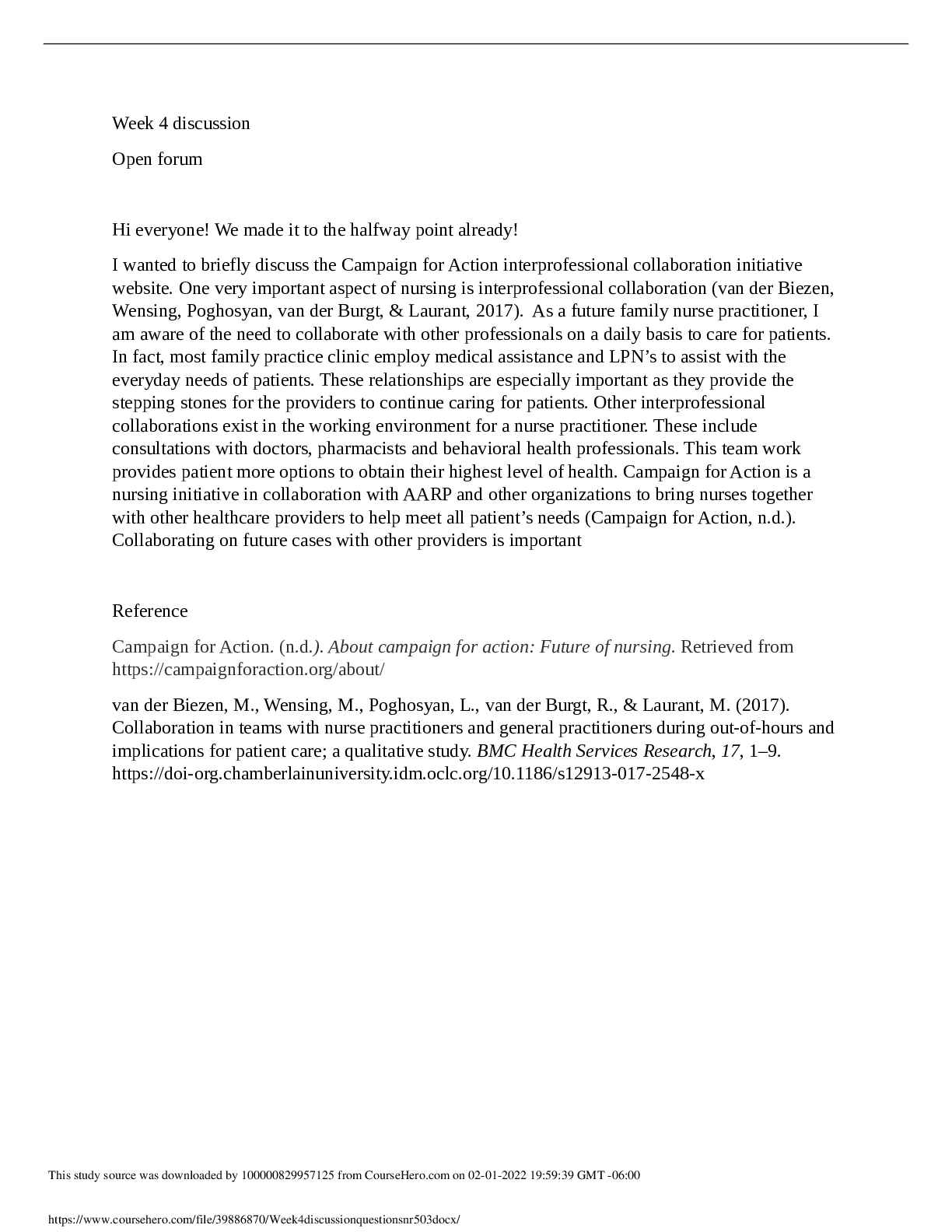

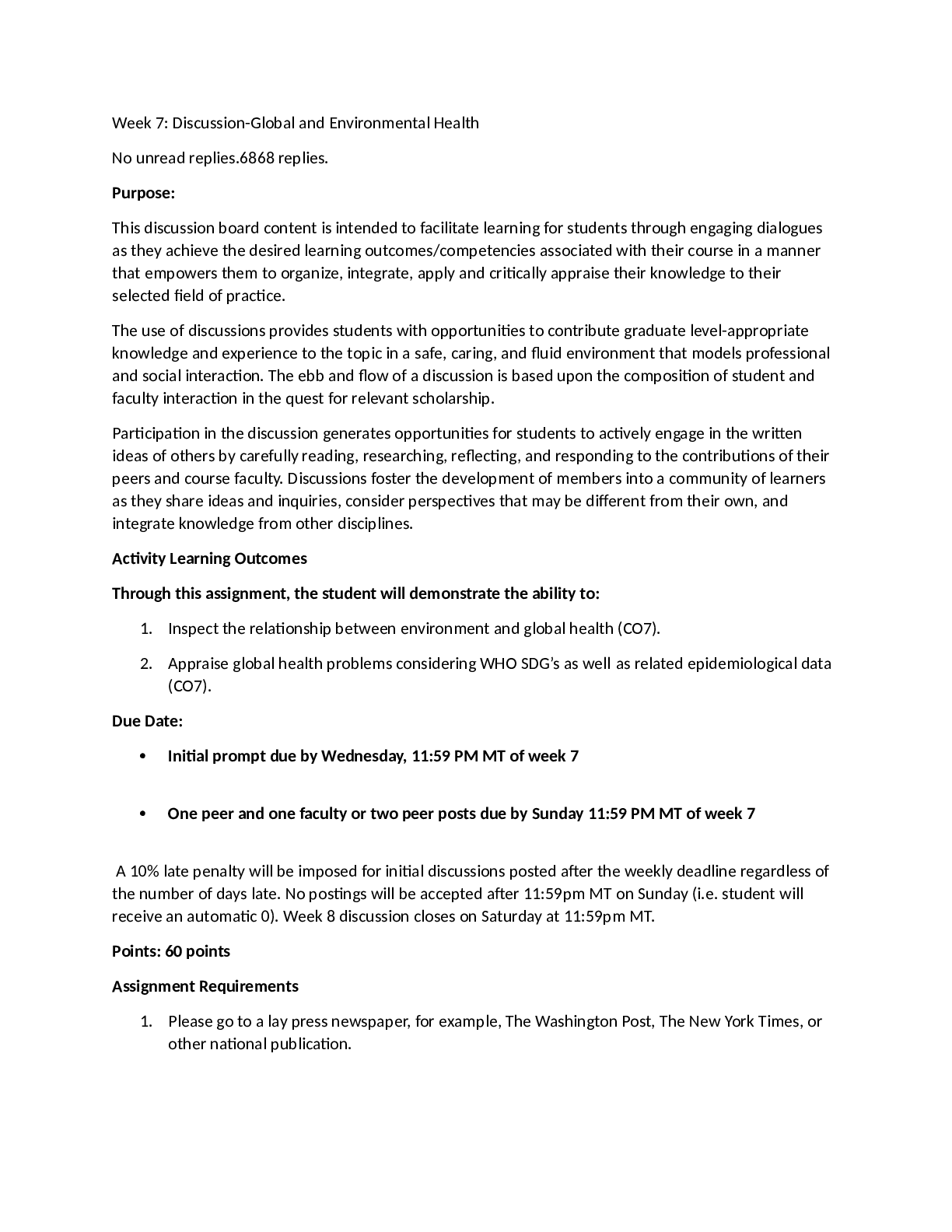


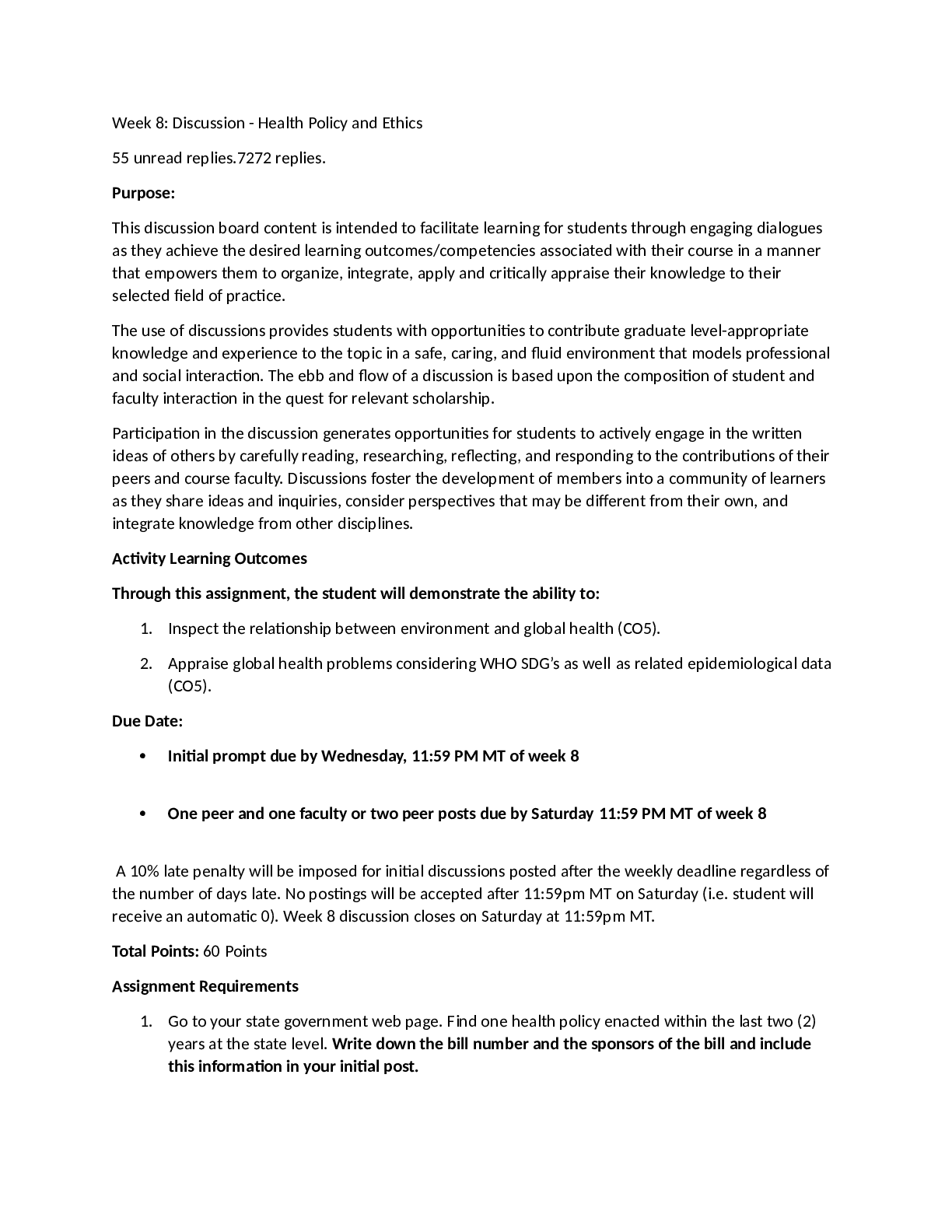

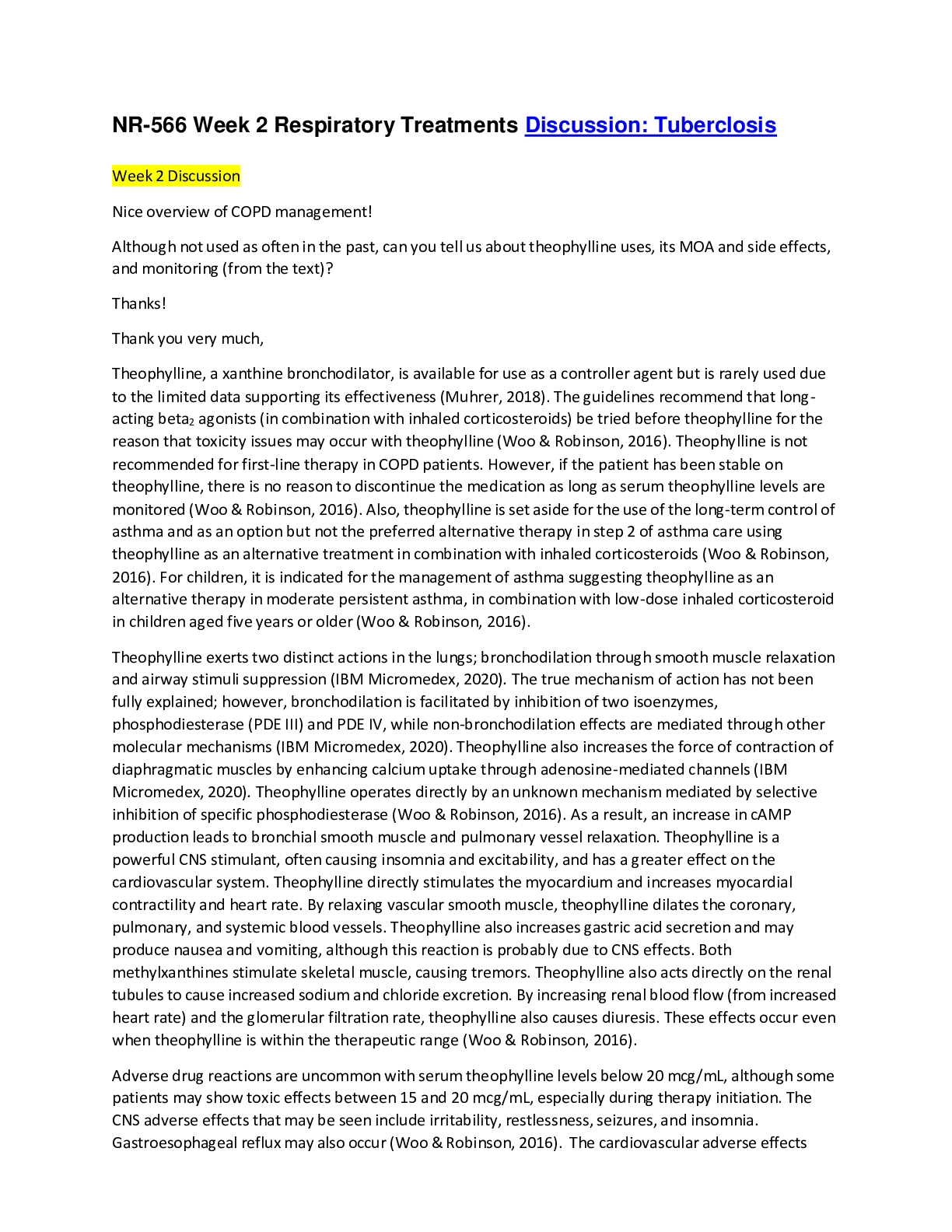
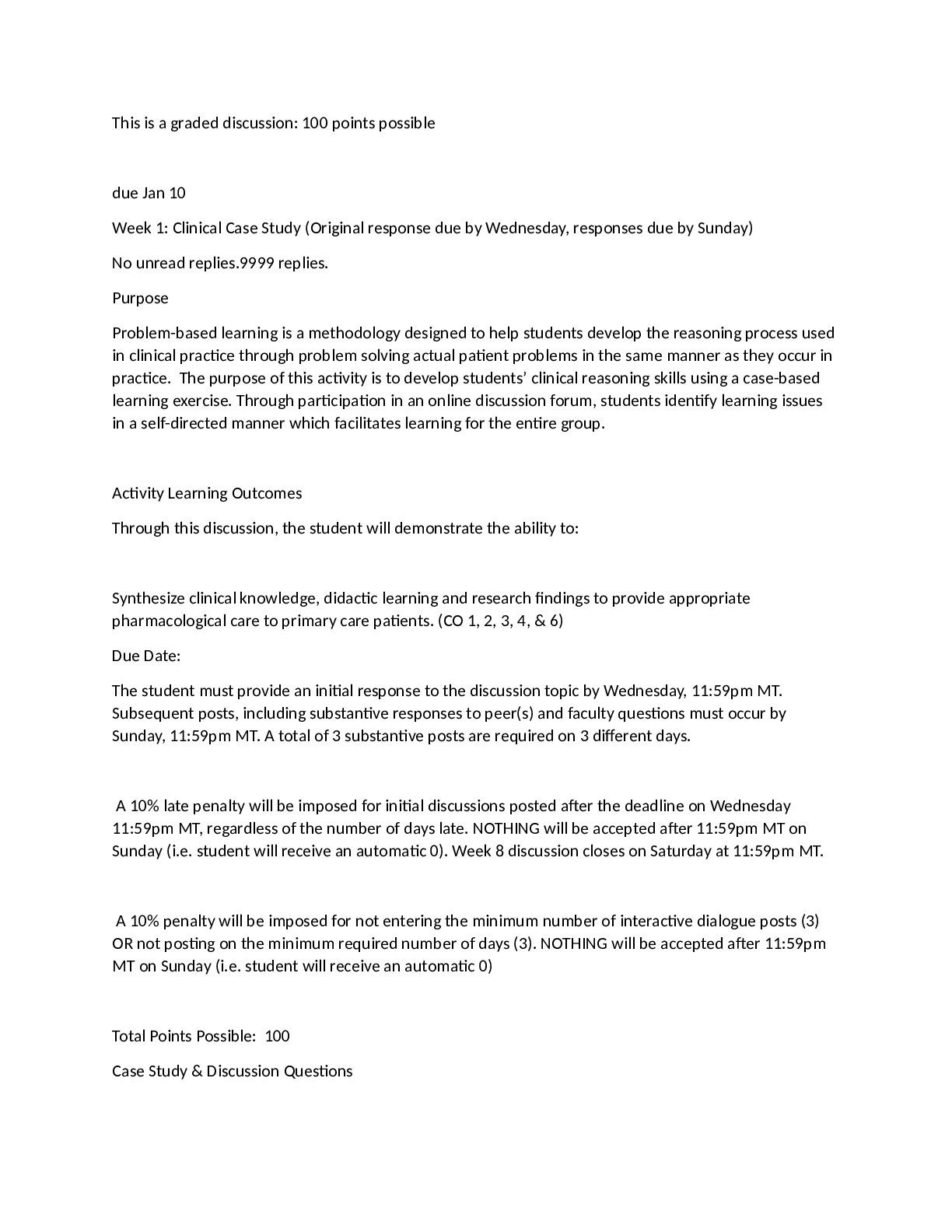
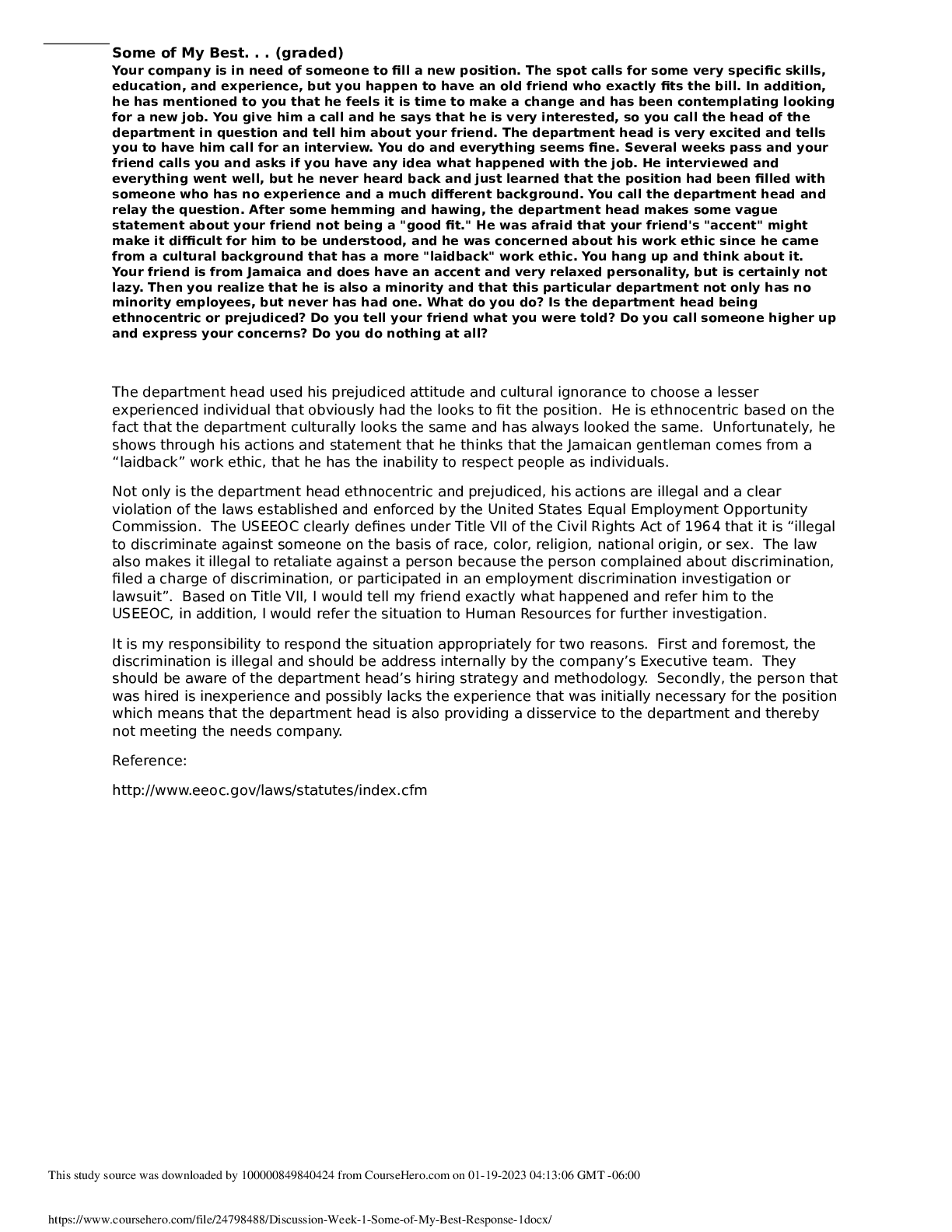


.png)
